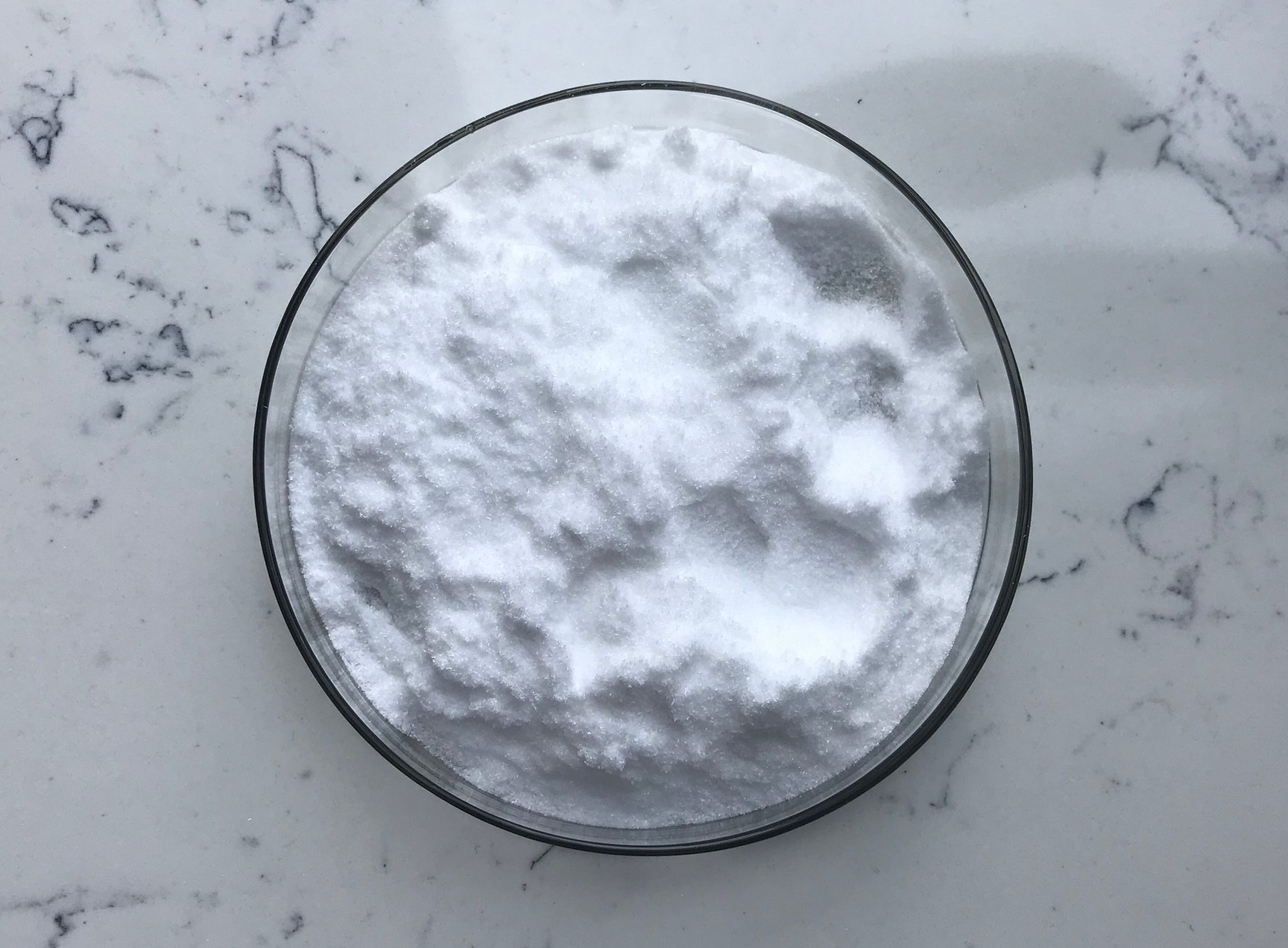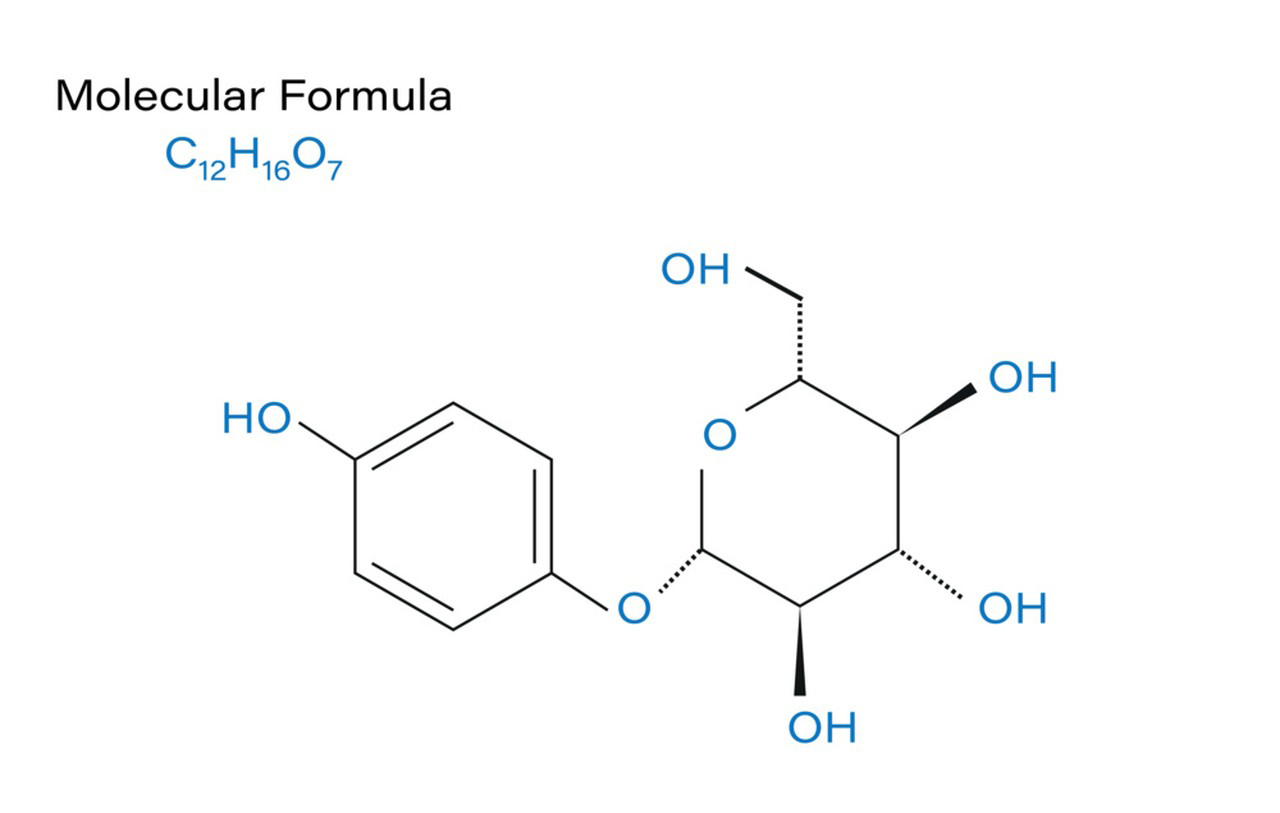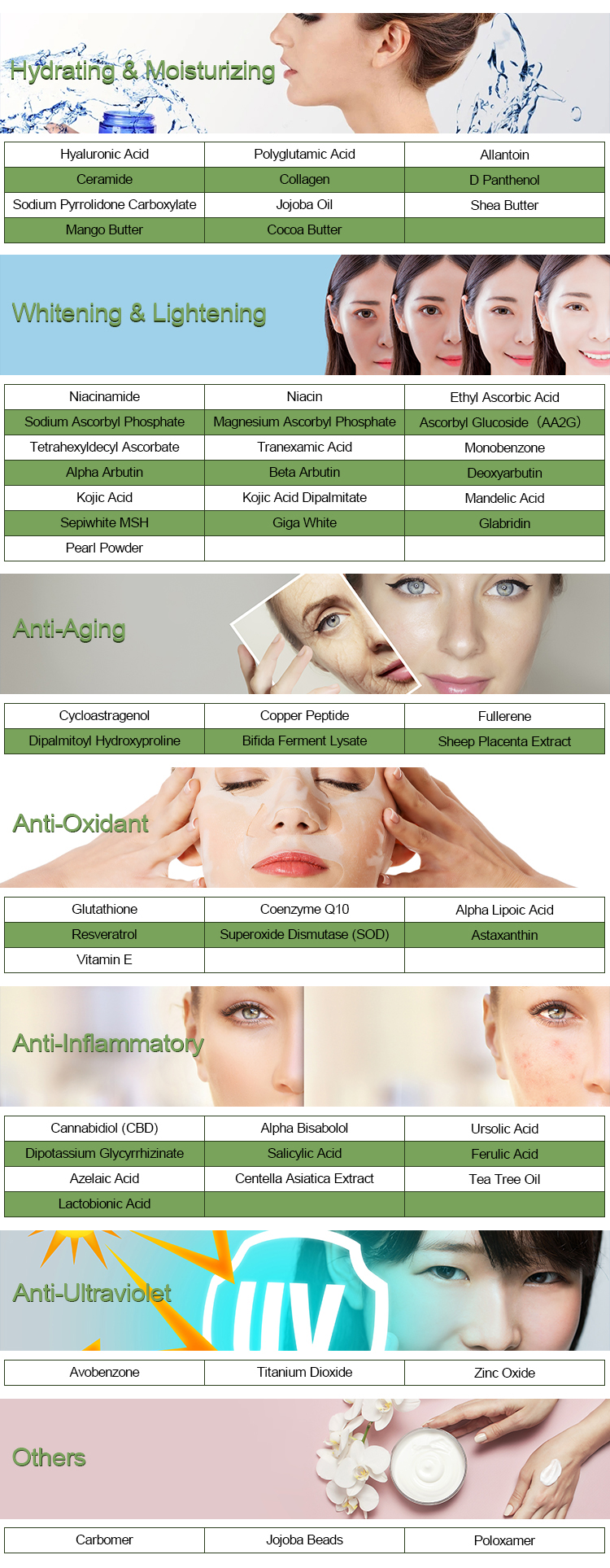Alpha arbutin is a naturally occurring compound found in various plant sources, particularly in the bearberry plant (Arctostaphylos uva-ursi) and cranberries. It is a glycoside of hydroquinone and is often used in cosmetics and skincare products due to its skin-lightening and melanin-inhibiting properties. Here’s some information about its chemical structure and physical properties:
Chemical Structure of Alpha Arbutin:
- Alpha arbutin has the chemical formula C12H16O7.
- Its IUPAC name is 4-Hydroxyphenyl α-D-glucopyranoside.
- The chemical structure of alpha arbutin consists of a glucose molecule (glucopyranoside) bound to a hydroquinone moiety.

Physical Properties of Alpha Arbutin:
- Appearance: Alpha arbutin is typically a white, crystalline powder.
- Solubility: It is soluble in water, which makes it suitable for use in aqueous-based cosmetic and skincare formulations.
- Melting Point: Alpha arbutin has a melting point of around 195-203°C (383-397°F).
- Odor and Taste: It is odorless and tasteless.
Skin Benefits of Alpha Arbutin:
Alpha arbutin is known for its skin-lightening and melanin-inhibiting properties. It works by inhibiting the activity of tyrosinase, an enzyme involved in the production of melanin, which gives skin its color. By inhibiting melanin production, alpha arbutin can help reduce the appearance of hyperpigmentation, dark spots, and uneven skin tone. It is considered a safer alternative to hydroquinone, another skin-lightening agent, as it has a lower risk of side effects like skin irritation.
When using skincare products containing alpha arbutin, it’s important to follow the recommended usage guidelines and consult with a dermatologist if you have specific concerns about your skin. Additionally, always use sun protection when using skin-lightening products, as they can increase skin sensitivity to UV radiation.
Keep in mind that this information is based on my knowledge as of January 2022, and there may have been developments or new research regarding alpha arbutin since then.

Alpha Arbutin versus Beta Arbutin
Alpha arbutin and beta arbutin are two forms of a natural skin-lightening compound known as arbutin. They are often used in skincare products to address issues like hyperpigmentation, dark spots, and uneven skin tone. Here’s a comparison of the two:
Alpha Arbutin:
- Alpha arbutin is the more stable and effective form of arbutin.
- It is considered a stronger inhibitor of tyrosinase, the enzyme responsible for melanin production, which makes it more effective at lightening the skin.
- Alpha arbutin is a glycoside, which means it is a water-soluble compound and is more easily absorbed by the skin.
- It is considered safe for various skin types, including sensitive skin.
Beta Arbutin:
- Beta arbutin is less common and less stable than alpha arbutin.
- It is generally considered less effective at skin lightening and inhibiting melanin production compared to alpha arbutin.
- Beta arbutin is less soluble in water, which can affect its absorption by the skin.
- While it can be effective for some people, it may take longer to see results when using beta arbutin in skincare products.

In summary, alpha arbutin is the preferred form of arbutin in skincare products due to its stability, higher efficacy, and better skin penetration. It is generally considered a more reliable option for treating hyperpigmentation and achieving a more even skin tone. However, the specific results can vary depending on individual skin types and the overall formulation of the skincare product in which these ingredients are used. Always patch test new products and consider consulting with a dermatologist for personalized advice on addressing your skin concerns.
